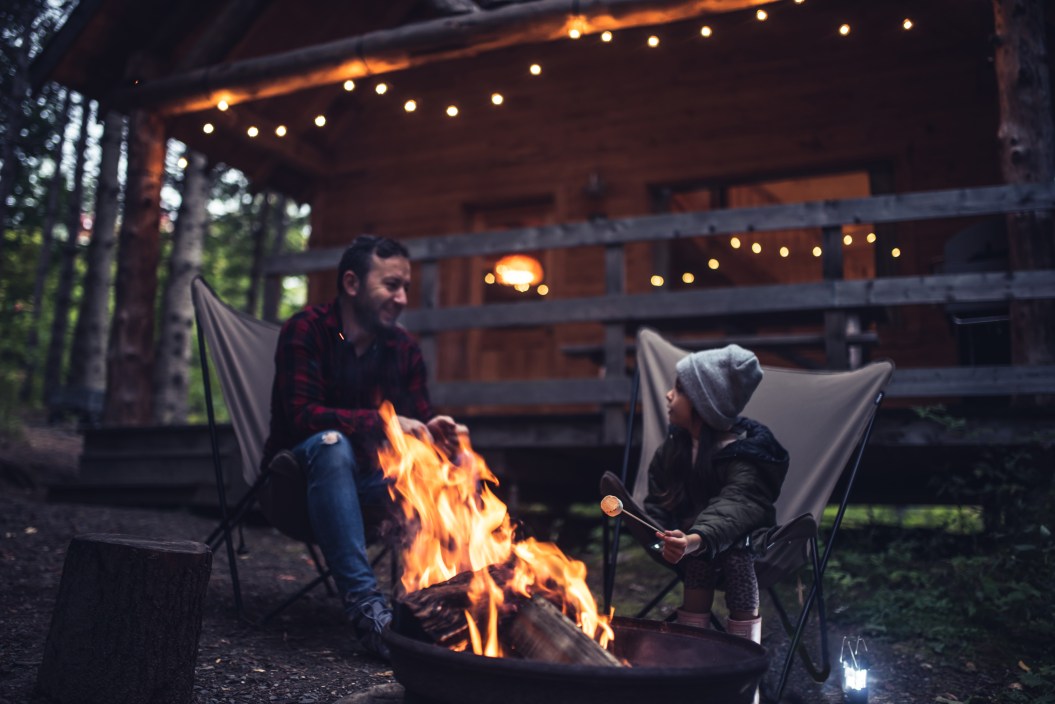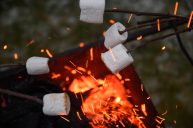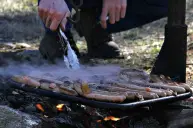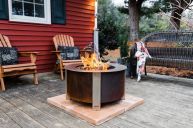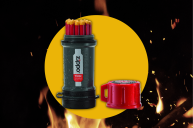In our opinion, there's pretty much nothing better than sitting around a campfire after a day of outdoor adventures. Assuming your location is not under fire restriction, a blazing campfire cooks food, keep you warm, and exude ambiance at your favorite campsite or backyard fire pit.
I personally use campfires to warm up while I'm big game hunting each fall, and I love having one going in the backyard when my neighbors come over for wild-game cookouts.
However, starting a campfire can feel intimidating. Take some of the guesswork out by using a campfire starter. Yes, it's important to know how to start a fire from scratch. But sometimes you're looking to get to the marshmallow roasting ASAP and don't have the patience to fight damp kindling.
The best campfire starter should be made of flammable materials safe to inhale, of course, but also be small enough to transport camping with you and, ideally, pretty cheap. I've built a lot of fires in my time outdoors. These are the best campfire starters to get your next fire crackling in no time, at home or in the backcountry.
Our Recommendations:
- Best Overall Campfire Starter: Lightning Nugget Firestarters
- Best Torch Campfire Starter: Snow Peak Folding Torch
- Best Campfire Starter Multitool: Outdoor Element Firebiner
- Best Sustainable Campfire Starter: UCO Sweetfire Fire Starter Tinder
- Best Waterproof Campfire Starter Kit: UCO Titan Stormproof Match Kit
- Best Fire Starter for Charcoal: Masterbuilt Fire Starters
- Best Electric Fire Starter: SOL Fire Lite Fuel-Free Lighter
- Best DIY Campfire Starters: Multiple
- Best Firestarters to Use in the Backcountry in a Pinch: Multiple
Best Overall Campfire Starter
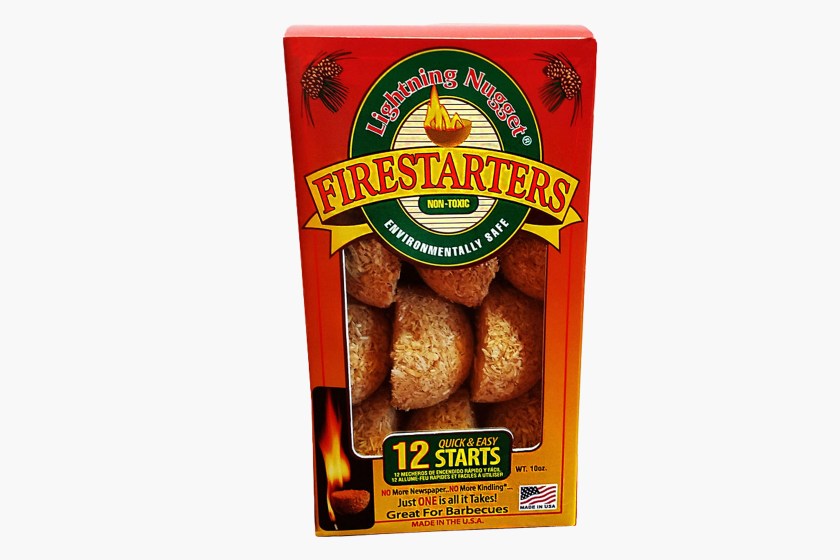
Top Pick: Lightning Nugget Firestarters
In terms of ease of use and value, Lightning Nugget Firestarters are one of the best fire starters out there. They can start everything from charcoal grills to campfires to woodstoves, are made in the U.S., have an unlimited shelf life, and are environmentally friendly. Twelve nuggets weigh only about 10 ounces, making them an excellent option for car camping and short backpacking trips. Once lit, they'll burn for about 15 minutes.
Lightning Nuggets are considered the best because of their reliability, affordability, and quality. Although they don't look like much—they're just resinous pine shavings stuck together with wax—they pack a punch to light a fire. As long as they're kept dry, they'll light on fire. One pack of 12 costs less than $5, too.
There are only a few drawbacks to Lightning Nuggets, according to reviewers. Sometimes, it takes two nuggets to really get a fire going. Additionally, the nuggets can be tricky to start on fire—you may need extra tinder, like paper or dried moss, to get your nugget going. Lastly, they can crumble into pieces if they're not stored in an airtight container.
Best Torch Campfire Starter
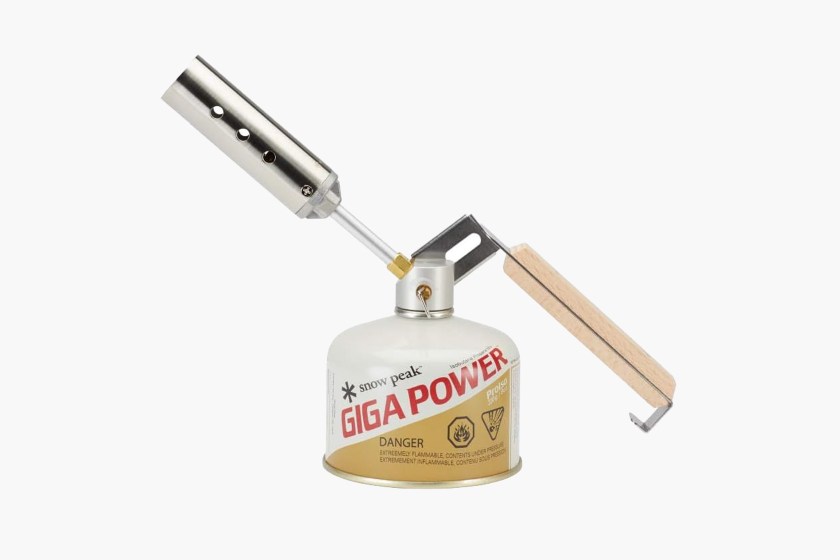
Top Pick: Snow Peak Folding Torch
Skip the tedium of tinder with a torch. These things blast out a hot flame that will quickly get the fire started, even if your wood is slightly damp. The Snow Peak Folding Torch is a great option that attaches to any isobutane fuel canister with a Lindal valve, including MSR, Jetboil, and Snow Peak canisters to crank out up to 14,000 BTUs. Pack one the next time you go car camping or backpacking, or keep one handy to start a fire in your home firepit or woodstove.
The Snow Peak's combination of coolness and functionality makes it a great option for any outdoor enthusiast. The fuel-based Snow Peak torch features a stay-cool wooden handle, comes with a carrying case, and weighs 6.2 ounces. This torch can even be used upside down!
However, like any other fire starter, the Snow Peak isn't perfect. Sometimes, if held at an angle, the torch will go out. It may also go out in very windy conditions. This torch also doesn't have its own igniter; it must be lit with a match or a lighter, so don't forget to pack those as well.
Best Campfire Starter Multitool
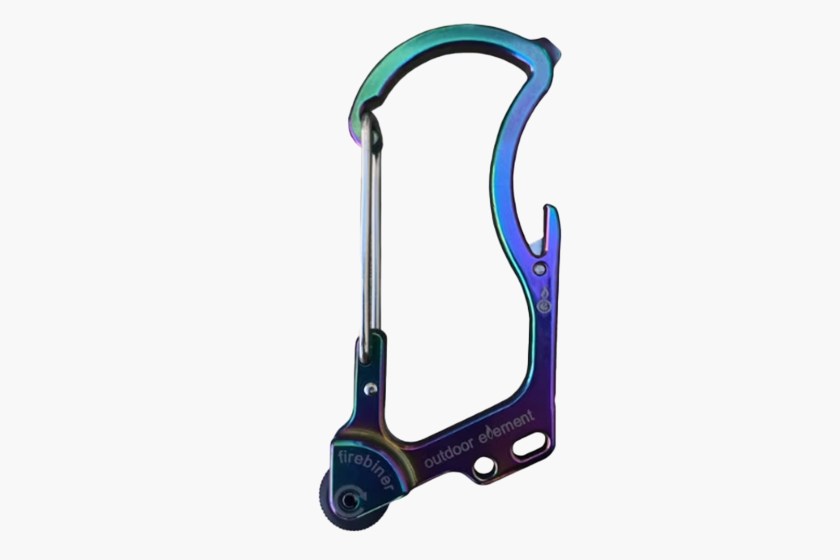
Top Pick: Outdoor Element Firebiner
If you're a backpacker or minimalist camper, consider Outdoor Element's Firebiner multitool, which includes a spark wheel and replaceable ferro rod to help get your campfire going. If you're like me, you've gotten your fair share of ferrocerium rods only to set them down on the ground at your campsite, never to see them again. Outdoor Element's solution connects a ferro rod to a carabiner that you can hang from your backpack, belt loop, or keychain to keep it handy and from getting lost.
The Firebiner is more than just a firestarter: The stainless steel tool features a bottle opener, screwdriver, and a safety blade. The carabiner itself is rated with a 100-pound capacity, so you can use it to string up your bag off the ground, for example. (Just keep in mind that the carabiner function is not for climbing use.)
The ferro rod is easy to use. Spin the wheel and it'll kick out sparks in one direction. It comes with extra rods and you can purchase additional ones, too. The safety blade cuts through fishing line, string, paracord, and more. Plus, who doesn't want a detachable bottle opener for cracking open a cold one around the bonfire?
Reviewers have just a few quibbles with the Firebiner. The stainless steel carabiner gate may weaken over time and stop closing. It may also pop off, but it's easy to stick back on. Additionally, there isn't a way to replace the safety blade once it gets dull. The screwdriver tip is also relatively short, and getting an O-ring through the Firebiner's keychain hole is challenging. But overall, the Firebiner is a handy way to create a spark while making it difficult to lose your ferro rod.
Best Sustainable Campfire Starter
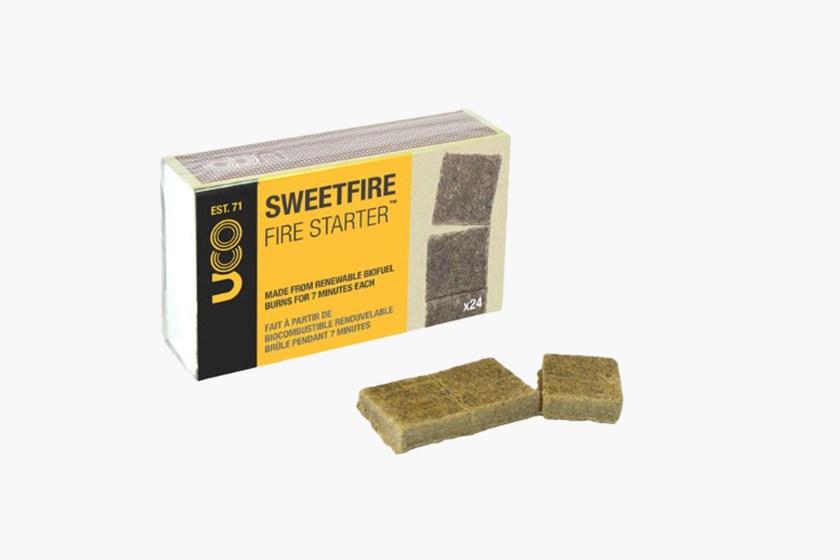
Top Pick: UCO Sweetfire Fire Starter Tinder
The best all-natural fire starter is the UCO Sweetfire Fire Starter Tinder. It's made from bagasse, the dry, pulpy residue left over after the juice has been extracted from a sugar cane. UCO combines this waste product with vegetable wax to create an all-natural, reliable, affordable, and sustainable fire starter.
One package of UCO's Sweetfire fire starters contains 24 starters and costs less than $4. Weighing in at only 3.7 ounces, this fire starter is a useful option for campers, backpackers, and other outdoor enthusiasts. They're easy to use with a lighter, flint, or fire steel, and come with matches, too.
However, each of Sweetfire Fire Starters only burns for about six minutes—less than half the time a Lightning Nugget will burn. It may also take several Sweetfires to really get your fire going. Although they'll light in damp conditions, it's hard to light them in the wind. Pro tip: Use a pocket knife to rough up the top of the square before lighting it, and it will light on fire more easily.
Best Waterproof Campfire Starter Kit
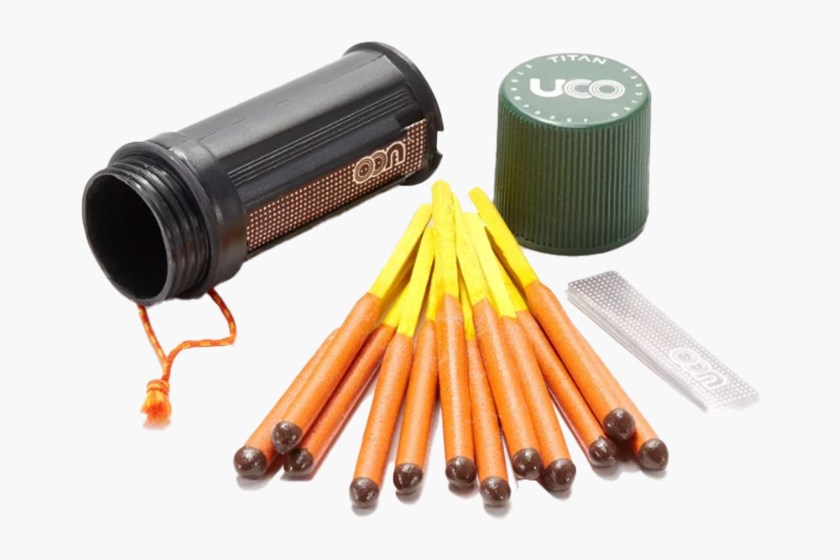
Top Pick: UCO Titan Stormproof Match Kit
UCO also makes an amazing waterproof fire starter kit: the Titan Stormproof Match Kit. I swear by these matches in emergencies and I keep them in my survival kit; they are lightweight to carry and will light on fire in the rain, snow, wind, and even after being submerged in water. These matches are an excellent product to keep on hand in case your lighter runs out of fuel, gets lost or breaks.
These windproof, weatherproof matches are four inches long with a 25-second burn time. The fire-starting kit contains 12 matches, three replaceable match strikers, a floating waterproof case, and a lanyard. Weighing in at a mere 2.9 ounces, this is an excellent option for ultralight backpackers, car campers, and folks exploring by canoe.
Just keep in mind that these matches are not for indoor use. They burn hot, long, bright, and are very difficult to extinguish before they burn out—remember, they're constructed to not go out, even in horrible conditions. Running this match under your sink may not extinguish it, but these are known to stay lit even underwater!
If you burn through all your matches in this kit, don't fret! You can buy boxes of UCO stormproof matches to replenish them.
Best Firestarter for Charcoal
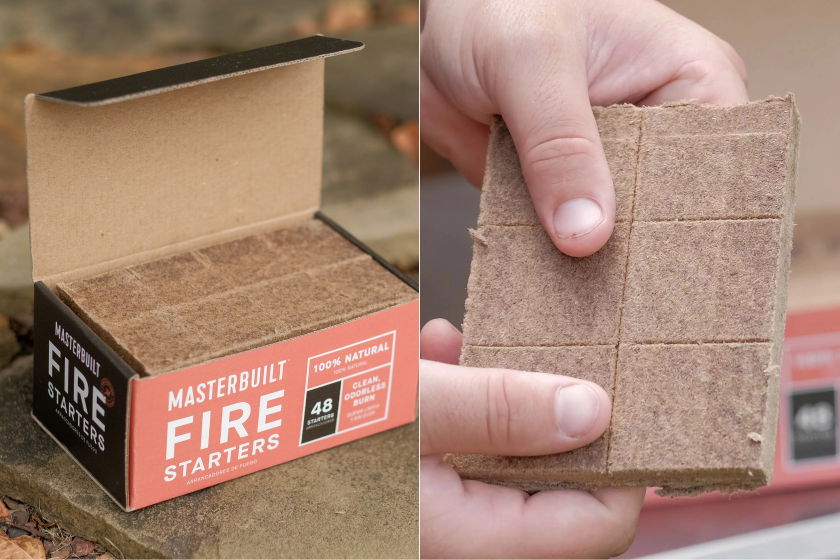
Masterbuilt
Top Pick: Masterbuilt Fire Starters
For those who do a lot of charcoal grilling, these Masterbuilt starters will make it that much simpler to get a good char on your burgers and hot dogs. Each odorless, smokeless cube will burn up to 1300 degrees Fahrenheit, making it a breeze to get your grill up to the temperature you need.
They're also highly reliable, never failing to produce smoke time and time again. And compared to other brands that make a huge mess, these chunks break off much easier and more cleanly.
Best Electric Campfire Starter
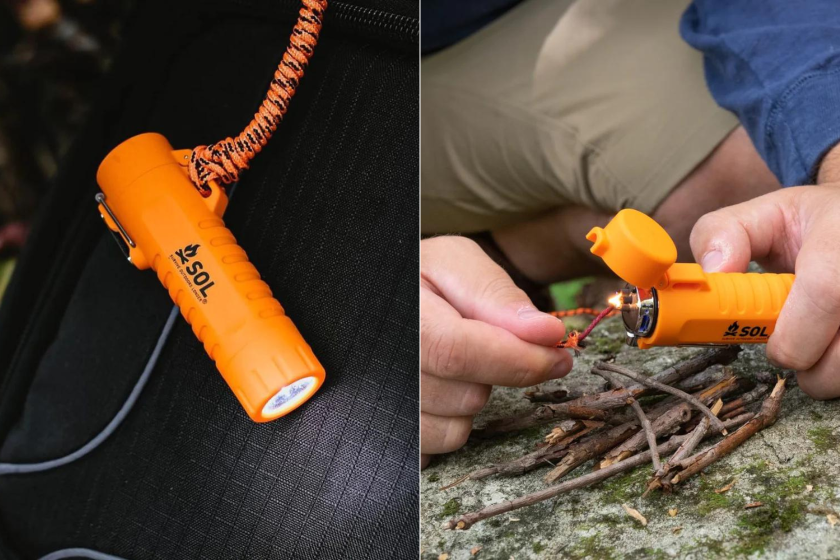
S.O.L.
Top Pick: SOL Fire Lite Fuel-Free Lighter
If you prefer a more modern, labor-free fire starter, this weatherproof electric lighter is about as easy as it gets. With a quick touch of the button, you can quickly get a flame going in virtually any condition, including higher altitudes where other lighters don't always work.
The SOL Fire Lite Lighter is completely fuel-free. Instead, it lights on a battery charge, which takes about two hours to reach full via the included USB cable.
In addition to being rechargeable, I like this electric fire starter because the bright orange color makes it easy to find in my gearbox and it ignites pretty much instantly. The real winning trait: It comes with a 3-foot lanyard of tinder cord you can burn when kindling is too wet to get you started.
Best DIY Campfire Starters
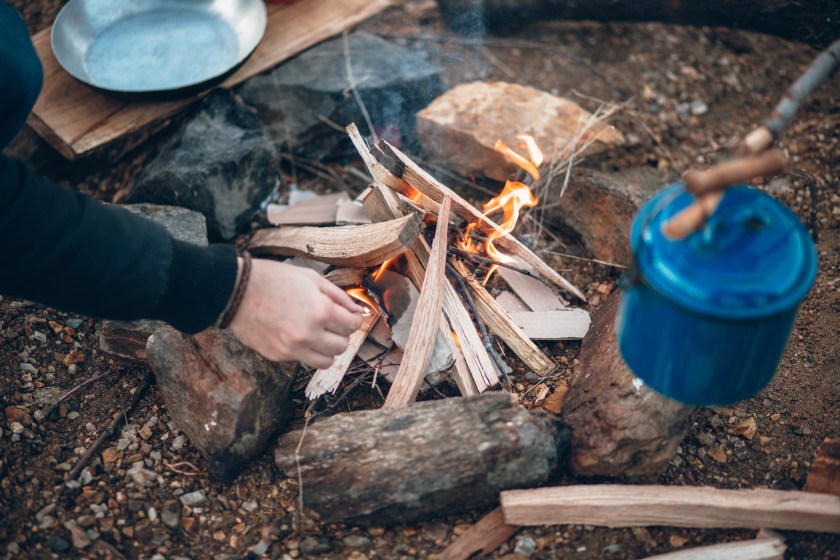
Getty Images, hobo_018
While it's easy to go to the store and purchase fire starters, it can be even easier to make your own fire starters at home. Here are a few tried and true ways to make a homemade campfire starter:
- Egg cartons, dryer lint, and melted wax: This may be one of the most popular DIY fire starters out there, though it requires a little prep work. Grab an empty cardboard egg carton, a few laundry loads' worth of dryer lint, and some candle stubs or paraffin wax. To assemble this fire starter, first melt your wax in a pot on the stove. While it's melting, put a loose pinch of dryer lint into each of the 12 egg holders. Carefully pour your melted wax over the fluff balls to cover. Set aside to let the wax cool and harden, then cut apart the cups; now you have 12 fire starters.
- Cotton balls soaked in petroleum jelly: Grab a bag of cotton balls and a tub of Vaseline. Rub however many cotton balls you'd like with the petroleum jelly until they are completely saturated. Keep going until you have all the fire starters you need.
- Jute twine: Jute twine is highly flammable, and can be used as a wick to light a campfire.
- Newspapers: Keep all your old newspapers in with your camping gear and keep them dry. Rip them up and crumble them into balls to use as tinder to start fires.
- Sawdust: Another high-quality firestarter is sawdust. If you have a table saw or other power tools that create a lot of dust, stockpile it to use as tinder for future fires—just don't use the dust from pressure-treated wood.
Best Firestarters to Use in the Backcountry in a Pinch
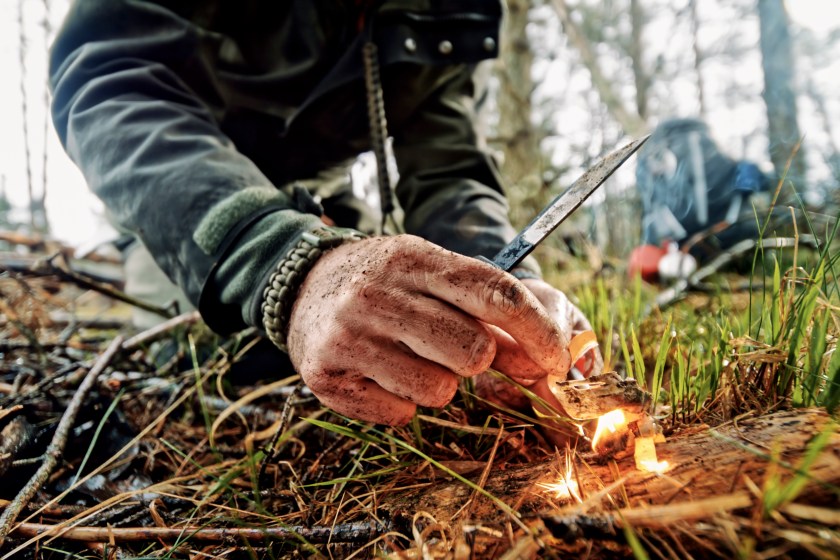
Getty Images, simonkr
If you find yourself in a bind in the backcountry and you need to light a fire, look for these natural materials. You may need to channel your inner bushcraft enthusiast:
- Dry grasses: These will light on fire very quickly and are generally plentiful.
- Dry pine needles: These also light on fire very easily, and because they probably have pine sap on or in them, they'll burn hotter and longer than dry grass.
- Resinous pine cones: These are also easy to find in pine forests. You may want pine needles in addition to cones to start your fire, but resinous cones will burn slowly, giving you time to feed your fire with more tinder and kindling.
- Birch bark: Birch bark is nature's paper. It's light, flammable, and relatively common in deciduous forests.
- Cattail fluff: If you're near a wetland, keep your eye out for cattails. Their fluff makes excellent tinder for a fire, as do dried cattail leaves.
- Thistle seed pods: These dried-up pods are full of fluffy seeds that easily light on fire.
- Old bird's nest: Bird's nests make great fire starters because birds build them in layers. The inner part of the nest will be made of soft, flammable materials and transition to small twigs the farther out you go. Just be sure a bird isn't using the nest before you take it!
FAQs
A good campfire starter is reliable, easy to use, and lights on fire in all weather conditions. Think about the times you'd really want to have a fire out in nature, for example, when you're hungry, cold, or need to purify drinking water. Do you want to rely solely on finding dry, flammable, organic materials around you in these dire situations, or would you want something that you know will reliably light on fire in rain, wind, or snow?
Good campfire starters light fires under all sorts of wild conditions. Ideally, they're light, easy to store in your backpack, and reliable even in inclement weather.
The best natural fire starters you can find around your campsite include dry leaves, pine needles, dry grasses, and anything around your camp that is very dry and flammable. Dry is the keyword here; the dryer your natural fire starter, the easier it'll ignite.
While growing up in the Midwest, my friends and I started large bonfires all the time. Whether we'd gathered a massive pile of used-up, dried-out Christmas trees, found a stack of old pallets, or just had a ton of pizza boxes to get rid of, we knew it was an excuse to start a bonfire.
What did we Midwesterners use as an accelerant every time we started a bonfire? Gasoline. Nothing creates a fire faster than a spray of gasoline, which is a highly combustible fuel. However, this method is dangerous and not very friendly to the environment. It's easy to spill gas on yourself, your hands, and other things you don't intend to burn when using gasoline as an accelerant, not to mention you're dumping all sorts of fumes into the environment—and your lungs.
Instead of using gasoline to accelerate your bonfire, consider using tree pitch or sap, lots of dry grass, or other flammable materials to make your fire grow. Practicing patience while you wait for your fire to get bigger is a good thing to do before dumping gasoline into your fire pit.
Lighting and maintaining a campfire is a ton of fun, especially when you share them with friends and family on calm summer evenings. Don't forget to pack your favorite fire starter with you on your next camping trip, along with some marshmallows, graham crackers, and chocolate!
